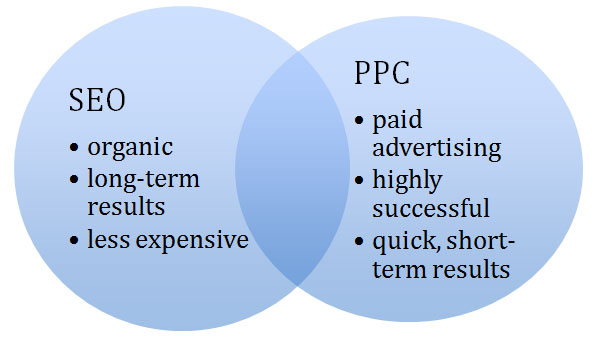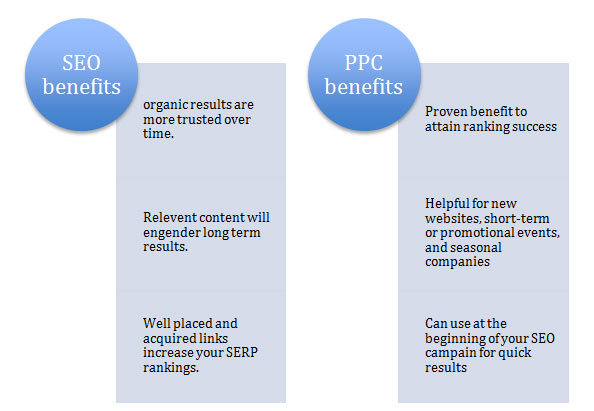Your website goals include 1) increased traffic, 2) higher rankings in the most popular search engines, and 3) higher conversions. So what’s the best way to go about achieving them? The two main routes to increased traffic and higher rankings are search engine optimization (SEO) and pay-per-click (PPC) advertizing. As they say, all roads lead to Rome, but which road is the best choice for your business? This article aims to explain both choices in order to make your decision informed and easy to make.
SEO and PPC – how are these methods alike?
Imagine two well- dressed people sharing an umbrella. The umbrella is Search Engine Marketing (SEM), and the dapper individuals underneath are Search Engine Optimization (SEO) and Pay Per Click (PPC) advertisements. These two are the primary tools for anyone seeking to market in the search engine realm. The purpose of both is to drive traffic to your website through usage of search engines. However, these individuals are dressed differently- they go about their purpose in distinctive ways. In a nutshell, SEO is often considered as organic and PPC is thought of as advertising. The remainder of this article will describe the differences.
SEO
Search engine optimization uses the content of your website to work with a search engine’s parameters. Use of highly searchable terms within your website’s content will result in a higher ranking on the search engine’s results page (SERPs). With SEO, instead of paying the search engine, you hire an SEO consultant to maximize your site. There are 3 popular ways to go about maximizing your site for search engines: 1) On-page optimization, 2) Back links, and 3) social media and blogs.
- On-page optimization recreates your webpage to appear relevant and clean for search engines.
- Back links connect your site to other sites, thus using their authority to boost yours.
- Social Media and blogs increase your web presence and searchability by keeping content fresh and your website active.

PPC
When you perform a search, you likely notice the advertisements appearing on the top or side of the results page. These adverts are a marketing strategy called pay-per-click, named so because each time a user clicks on the ad, the web owner then owes a bit of money to the search engine. This cost is determined by three factors: 1) auction style bid, 2) quality score, and 3) keyword seasonality.
- The auction bid is based on how much the competition is paying. The more popular the keyword, the more costly it will be.
- The quality score of your website is determined by each search engine. The more authority you have, the less you pay.
- Some keywords are popular by season or holiday. Christmas toys or Valentines gift will cost more near their date of popularity.
Which to choose?
Now that you’re informed, you can see how both PPC and SEO have benefits. Whether you choose to use them both together, separately, in succession, or in isolation will depend on your needs and your budget. Good luck! But then again, with SEO and PPC, you won’t need it.





